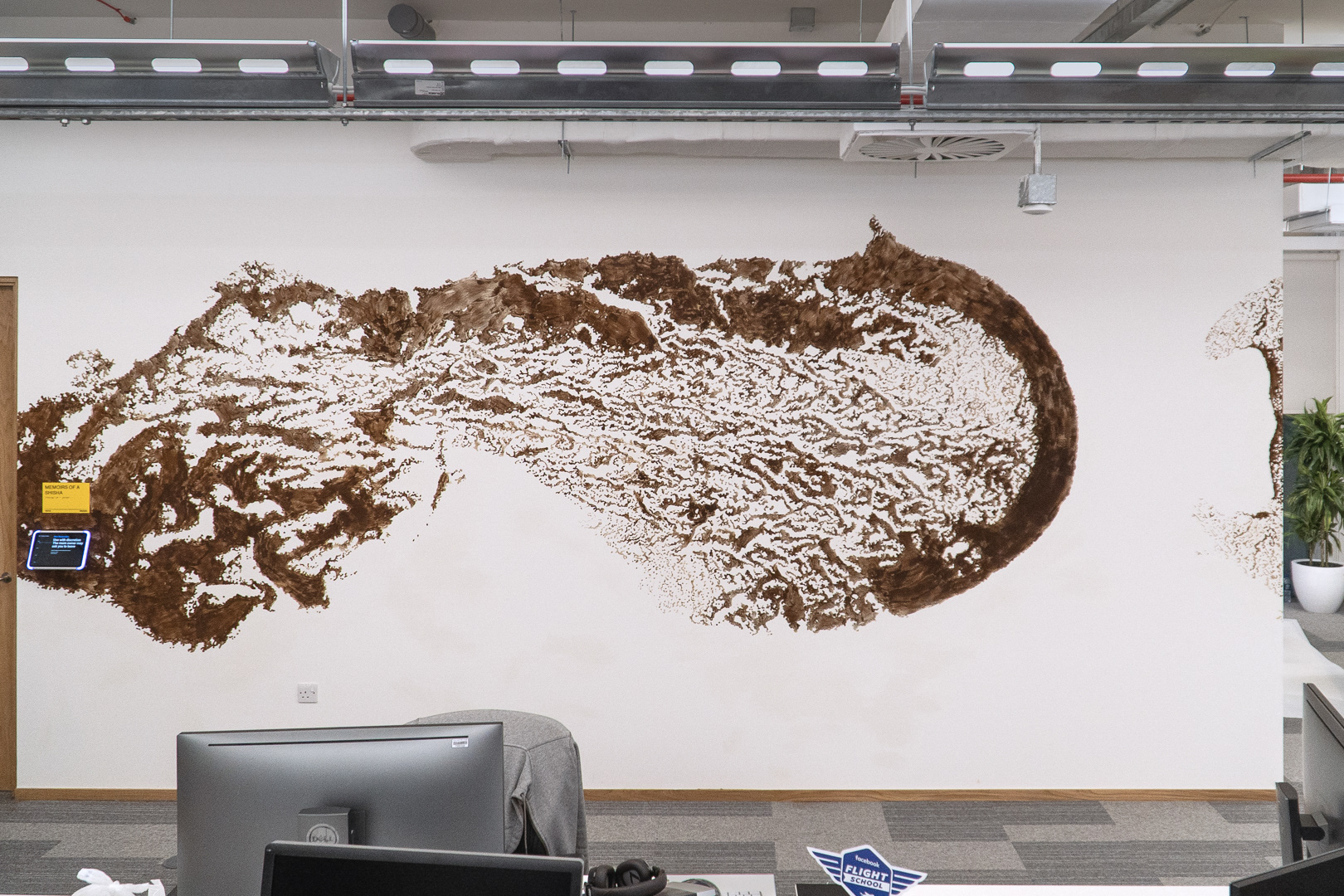
The Spores… Detail. © Photo: Daniel Keane 2019

The Spores… Detail. © Photo: Daniel Keane 2019

The Spores… Detail. © Photo: Daniel Keane 2019

The Spores… Detail. © Photo: Daniel Keane 2019
Location: Injaz Building Dubai
Facebook FZ-LLC
Date: 2019
Facebook FZ-LLC
Date: 2019
A context-sensitive and site-specific mural on two walls inside of the office premises of Facebook FZ-LLC in the Injaz Building in Dubai Media City. A collage of photographic reproductions of coffee grounds is reproduced on two walls of the office with grounded coffee beans.
Coffee is by far the world's most widely consumed stimulant. The substance was allegedly discovered in the region of the Kingdom of Kaffa by a goat herder in the Abyssinian highlands in Ethiopia in 900 A.D. He noticed a weird behavior among his animals. His goats were over-excited and couldn't find rest even at night. Today, this central nervous stimulant became the second-largest traded commodity after crude oil. No doubt that it must have a heavy yet widely unrecognized impact on the visual culture of the 21st century. Likewise, crude oil that is driving the “old” economy of industrial power, caffeine is the number one fuel for a new “attention economy” that indispensably connects eyeballs to illuminated screens. The major predicament for marketing and managing human attention is the vast disproportion between human temporal limits (fatigue and the need for rest and sleep) and the quasi-infinite amount of “content” to being traded (Crary 2013, 75). In this situation, coffee became an easy access drug that normalizes everyday life. It makes it fit the demand of 24/7 capitalism and the imperative “never miss what’s next!” that aims to eradicate sleep, the last human condition that sets a natural limit to a ubiquitous and never resting network for mining and sharing data. It cannot be a coincidence that Europe, the United States, and, surprisingly, Japan have the most pronounced coffee culture. Coffee may be the common fuel for the 24/7 exhaustion of human attention.
It took until the sixteenth century to open the first coffee house in Istanbul, but after that, coffee became the “wine” of the Islamic civilization and organized a new chapter of popular culture. People not only enjoyed flavor and smell and the effects on body and mind, but they also imputed magical powers to the drink and tried to predict their future from the shapes of the coffee grounds. Until now, foreseeing the future remained a popular tradition of oriental coffee ceremonies; it helps people to connect and share intimate details. And for what reason? to make anybody aware of what happens next.
The “No-Doze Exegesis” will bring attention to this dark matter of a bright visuality while reminding the popular practice of coffee reading. The mural is made of ground coffee that reproduces a magnified collage of coffee grounds on the wall in the Facebook offices. The figurative, yet abstract tautology of coffee made of coffee alludes to both: a) the mythical moment of genuine dissemination of the substance trimethylxanthine (caffeine) from the highlands in the Kingdom of Kaffa, and (b) the logic of self-referential processes that is the very nature of communication – information reproduces information. The endless chain of sharing and collecting data lifted to a higher technologically mediated level what the magic of coffee reading prepared us for – a mode of awareness that is constantly focused on the reception of future predictions. Don’t miss what’s coming next!